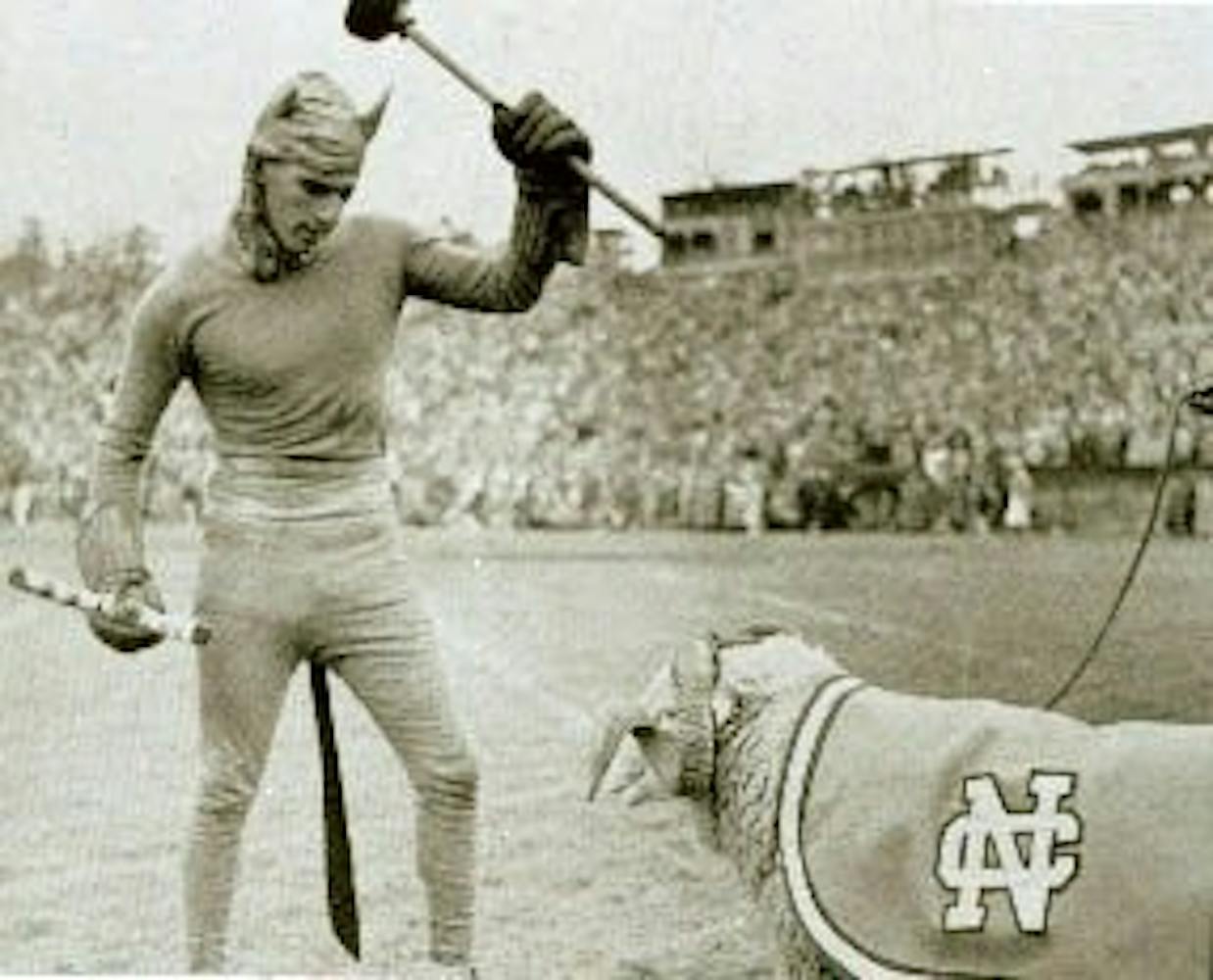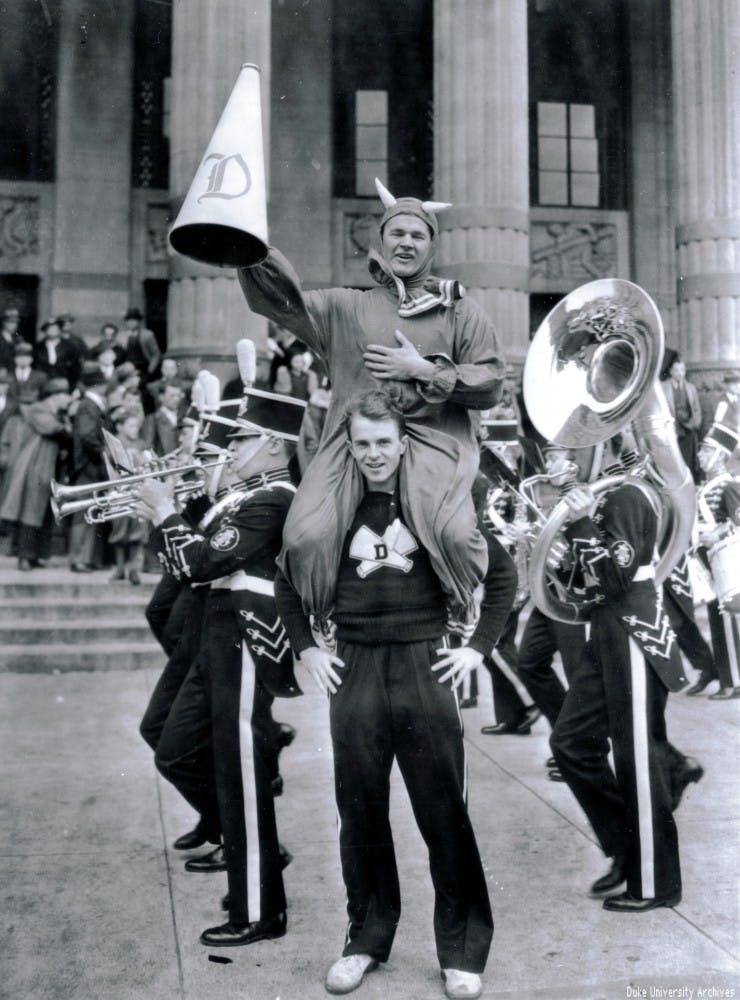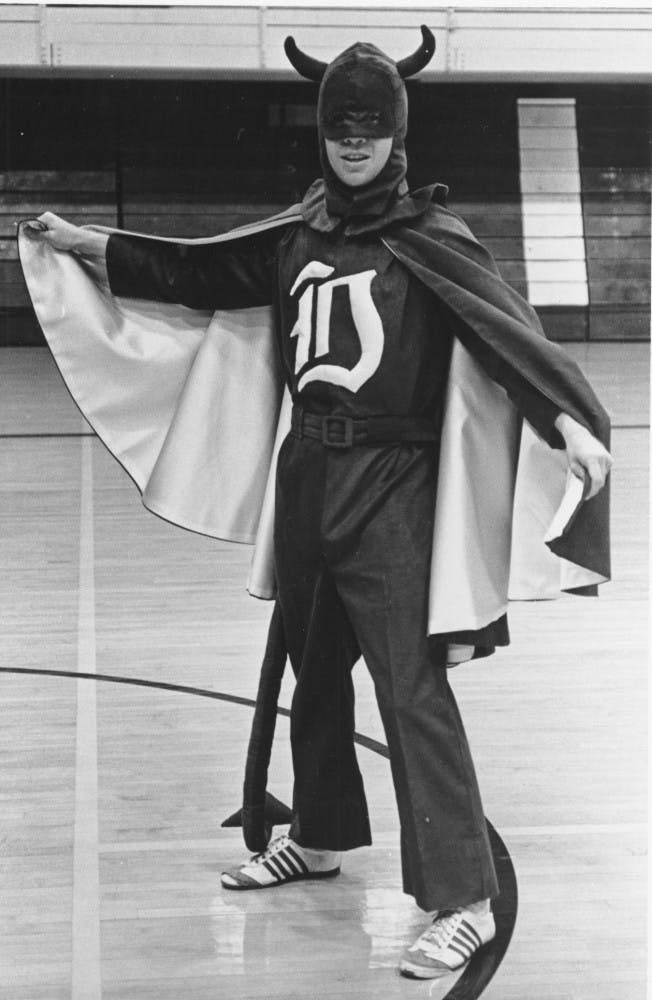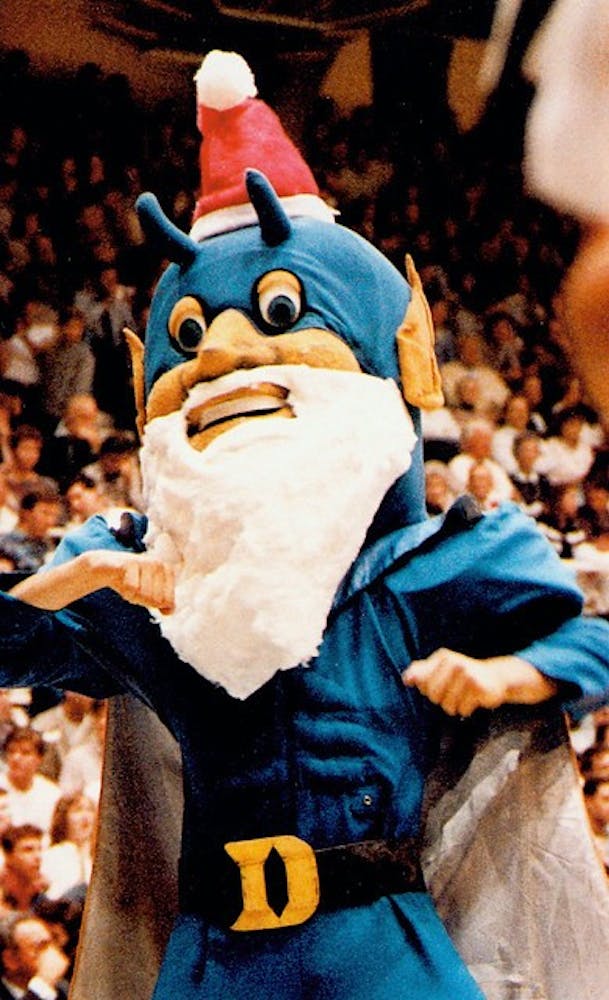In honor of Duke’s Centennial, The Chronicle is highlighting pivotal figures and events throughout the University’s history. Here we take a look at the birth of Duke Blue and the Blue Devil mascot:
Duke is instantly identifiable by its iconic Blue Devil mascot and deep blue color. Yet, at its inception, such imagery was entirely absent from Duke’s predecessor Brown’s Schoolhouse — later renamed Trinity College.
It took over 50 years for Trinity College to claim its “deep dark blue,” and another 30 years for the first Blue Devil to appear on Duke’s campus.
After hiring then-President John Franklin Crowell, Trinity founded its first football team in 1888. Crowell assumed the role of coach and led the Trinity team to its first game against the University of North Carolina at Chapel Hill that same year. The game also marked the first athletic competition between the two teams, who would later be coined as the Tobacco Road rivals.
While the origins of Duke Blue are disputed, one account traces the color choice to the alma mater of a new president.
Honoring Crowell, a Yale University graduate, the Trinity College football players sported dark Yale Blue uniforms that contrasted with UNC’s light blue apparel. Trinity triumphed over UNC 16-0 during the schools’ first match-up in 1888.
The UNC team would face Crowell’s players, clad in dark blue, in many subsequent rematches. In April 1889, The Trinity Archive recorded the first chant by fans incorporating the College’s new color:
“The University crowd, about 75 strong, literally woke Raleigh up with their yell (we mean before the game) — Rah! Rah! Rah! / For the white and blue! / Hoop la! Hoop la! / N.C.U.’”
“Trinity was not slow to catch up the strain (after the game, of course) and roll it off in this fashion: ‘Rah! Rah! Rah! / For the deep dark blue! / Hoop la! Hoop la! / We beat.’”
While the color white never received an official designation, it quickly became a common accent to the blue, and the pairing became strongly linked with Trinity College.
By the early 20th century, Trinity College had incorporated its blue and white colors into many cheers and songs.
The first discussion of a “catchy name” to represent the school came in a September 1921 edition of The Trinity Chronicle. The Chronicle’s campaign sought to identify and propose a name that could “become incorporated into our campus songs, our yells and our department of publicity.”
Students nominated a variety of names, such as the Catamounts, Grizzlies, Badgers, Dreadnaughts and Captains. Yet, the paper’s editors determined it essential for the mascot to embody the school’s dark blue color, so the pool of names was altered to include the Blue Titans, Blue Eagles, Polar Bears, Blue Devils, Royal Blazes and Blue Warriors.
Despite the narrowed field of nominees, none of the candidates received significant support, and the football season passed by that year without a name being selected.
Shortly thereafter, campus leaders from the soon-to-graduate Class of 1923 made plans to officially select Trinity's mascot name. Given the inconclusive results from the students’ voting process, editors of The Archive and The Trinity Chanticleer — two other student publications — agreed that deciding power rested with The Chronicle’s staff.
Beginning in the 1922-23 academic year, Editor-in-Chief William Lander and Managing Editor Mike Bradshaw decided that the school’s athletics teams would be referred to as the Blue Devils.
“Les Diables Bleus,” which translates to “The Blue Devils,” were an elite force of French soldiers who fought in World War I. The troops first gained recognition for helping to break a trench warfare stalemate in the French Alps, and their courage won them many accolades. The name carried special significance for the Class of 1923 as the first post-war freshman class, with many returning veterans within its ranks.
Despite its meaning, and the belief held by Lander and Bradshaw that it was the best among options, the name “Blue Devils” was widely unpopular in its first year of adoption. The Chronicle was the only publication to utilize the name. Some students opposed the name for religious reasons or because of the method by which it was chosen. Though, opposition never formally materialized in full from student organizations or Trinity administration.
As The Chronicle continued to use the name, it slowly caught on. Today, Duke has seen its “signature” color and mascot each in several forms.
While some alumni remember a crisp, navy blue shade of Duke, others recall more of a royal color. Several graduates from the 1940s remember the University’s blue being near-royal, possibly due to a football rivalry that the school held with the U.S. Naval Academy at the time.
Get The Chronicle straight to your inbox
Sign up for our weekly newsletter. Cancel at any time.
A Class of 1926 graduate wrote letters in 1964 describing the color as royal blue, while acknowledging dissent among faculty and staff as some believed the blue to be closer to Yale’s grayish navy.
The Executive Committee of the Board of Trustees formally adopted Prussian Blue as the school’s official color on Sept. 23, 1965. The Pantone Color Matching System lists Duke blue as 287-C, while its hexadecimal code is #00539B.
One explanation for variations in shades of Duke Blue comes from manufacturing limitations. Materials, costs and production equipment are all factors that can influence a decision to pursue hues that vary slightly from Duke Blue.
Despite the varied accounts of their adoption, both the Blue Devil mascot and Duke Blue — now interwoven with the school’s identity — are recognized as being ‘distinctly Duke.’
Ryan Kilgallen is a Trinity sophomore and an associate news editor for the news department.







